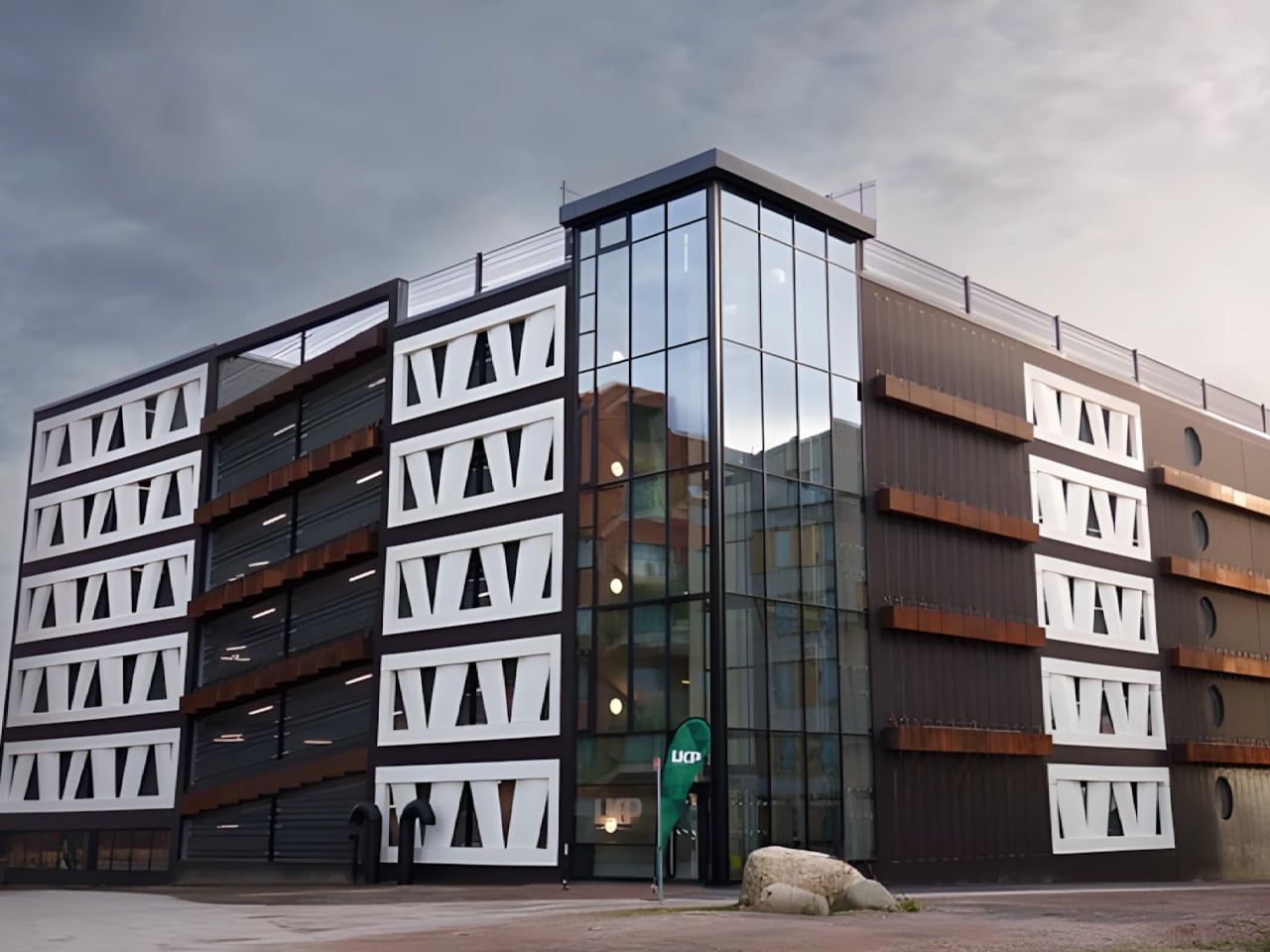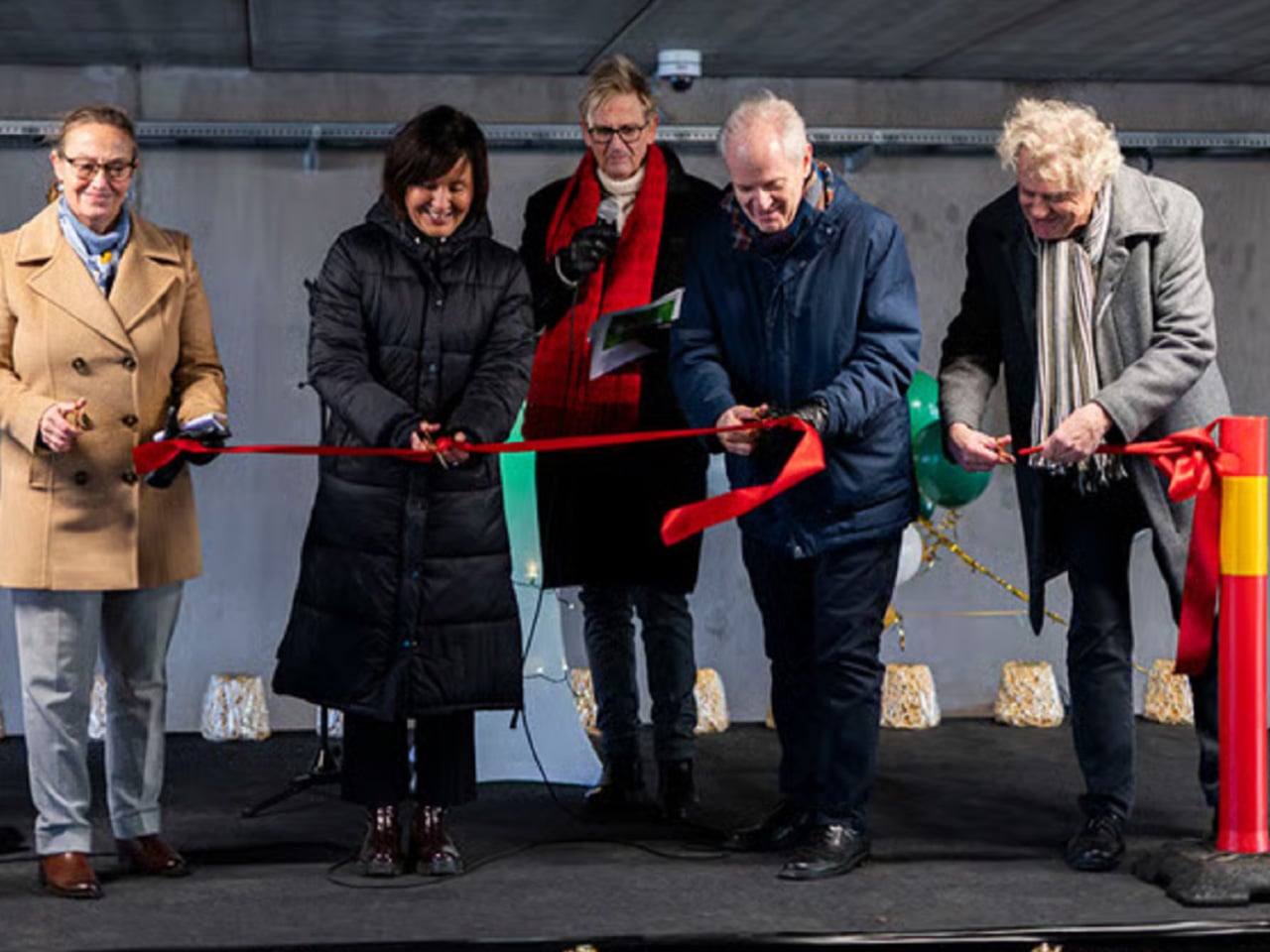
Sweden has opened the doors to a parking garage unlike any other in Europe. The Niels Bohr car park in Lund stands as a testament to what happens when architectural vision meets environmental necessity. The five-story structure houses 365 parking spaces and represents a groundbreaking approach to renewable energy waste, proving that circular economy principles can produce functional, safe infrastructure that people actually want to use.
Architect Jonas Lloyd stumbled upon the project’s core concept while flipping through a magazine. An article about America’s wind industry caught his attention, particularly the disposal problem plaguing decommissioned turbine blades. These massive structures, engineered from glass and carbon fiber composites to withstand decades of punishment from wind and weather, were ending up buried in landfills across the United States. Lloyd saw waste where others saw a dead end. When developer LKP commissioned his firm, Lloyd’s Arkitektkontor, to design a new parking structure for Lund’s growing Brunnshög district, he pitched an unconventional solution that would give turbine blades a second life as architectural elements.
Designer: Jonas Lloyd

Vattenfall, Sweden’s green energy giant, donated 57 rotor blades from its decommissioned Nørre Økse Sø wind farm. The team carefully cut and mounted these blades onto the building’s exterior, creating striking curtain walls that serve as non-load-bearing façade elements. The result is visually arresting: massive white curves sweeping across the structure’s face, their aerodynamic forms now frozen in place instead of spinning against Nordic skies.
The building integrates sustainability at every level beyond the repurposed blades. Forty electric vehicle charging stations connect to an on-site battery storage system. Solar panels blanket the roof, generating power during daylight hours that charges vehicles after dark. The façade incorporates pollinator-friendly plants alongside the repurposed blades, softening the industrial materials with living greenery. Lloyd’s satisfaction with the finished building centers on its symbolic power, demonstrating that sustainable architecture can transcend environmental buzzwords to create spaces people genuinely appreciate.
The project’s timing matters significantly. Vattenfall operates more than 1,400 wind turbines across Europe, and blade disposal represents a growing challenge for the renewable energy sector. The company has banned sending blades to landfills internally and committed to reusing or recycling 100 percent of blades and major components by 2030, exploring applications ranging from solar panel supports to ski manufacturing. The Niels Bohr garage, which opened in December 2025, attracted international attention as Europe’s first building to incorporate wind turbine blades into its construction. It demonstrates that renewable energy infrastructure can serve communities long after its original purpose ends, transforming from energy generator to architectural element without pause.

The post Sweden Transforms Wind Turbine Waste Into Europe’s First Blade-Built Parking Garage first appeared on Yanko Design.